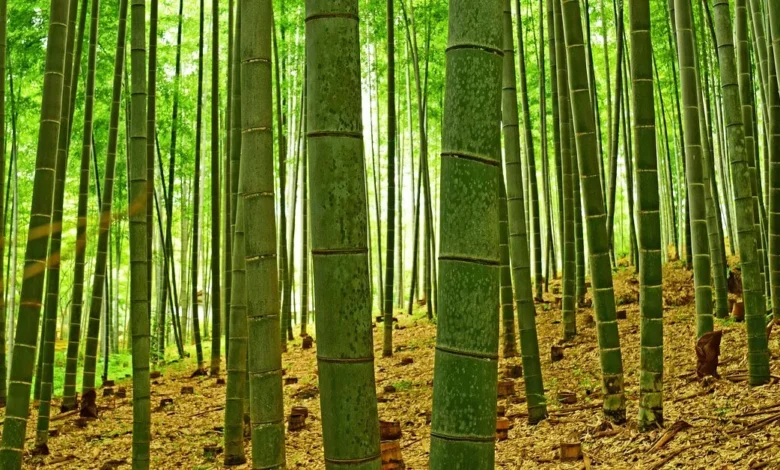How Fast Does Bamboo Grow? Understanding the Phenomenon of Growth

Bamboo is one of the most fascinating plants on earth due to its rapid growth rate and versatility. Whether you are a gardener, an environmentalist, or simply curious, understanding how fast bamboo grows is intriguing and essential for anyone involved in bamboo cultivation. This article will explore everything you need to know about bamboo gro
Bamboo
wth, its stages, factors affecting its speed, and practical insights on growing bamboo in your backyard.
What is Bamboo?
Bamboo is a grass in the Poaceae family known for its tall, woody stems called culms. Unlike typical grasses, bamboo has a unique growth pattern and can reach towering heights within a short span of time. While it is most commonly associated with Asia, bamboo can be found in diverse ecosystems worldwide, including tropical, subtropical, and temperate regions.
Why Bamboo Growth is Remarkable
Bamboo is often hailed as one of the fastest-growing plants in the world. Under optimal conditions, certain bamboo species can grow up to 35 inches (91 cm) per day. This extraordinary growth rate has led many to nickname bamboo the “wonder plant.” But how does bamboo achieve such rapid growth, and what factors influence it?
How Fast Does Bamboo Grow?
How fast bamboo grows depends on several factors, including species, environment, and care practices. Let’s examine these elements in more detail.
- Species of Bamboo
There are over 1,400 species of bamboo, each with unique growth characteristics. While some bamboo species grow at astonishing rates, others are slower. For instance:
- Moso Bamboo (Phyllostachys edulis), one of the largest bamboo species, can grow up to 47 inches (120 cm) daily under the right conditions.
- Golden Bamboo (Phyllostachys aurea), commonly used for landscaping, grows at a more moderate pace of about 6 inches (15 cm) daily.
The choice of species significantly influences how fast your bamboo will grow.
- Climate and Environmental Factors
Bamboo growth is highly dependent on the environment. Bamboo thrives in warm, humid conditions, and regions with a tropical or subtropical climate provide the best environment for rapid growth. Key environmental factors include:
- Temperature: Bamboo grows best in temperatures between 65°F and 95°F (18°C – 35°C). Extremely cold or hot conditions can slow down growth.
- Rainfall: Bamboo loves moisture, and areas with consistent rainfall encourage faster growth. Bamboo requires around 40-50 inches (100-130 cm) of annual rainfall.
- Sunlight: Bamboo needs plenty of sunlight to grow. Some species tolerate partial shade, but full sun is optimal for most bamboo types.
- Soil Conditions
Like most plants, bamboo prefers well-drained, nutrient-rich soil. The soil’s pH should be slightly acidic to neutral, typically between 5.5 and 6.5. Rich, loamy soils promote the healthiest and fastest growth. Conversely, poor or compacted soils can restrict bamboo growth.
- Watering and Fertilization
Proper watering is essential to support bamboo’s rapid growth. Bamboo roots need consistent moisture, but overwatering can lead to root rot. Regular watering, especially during dry periods, is crucial. Fertilizing your bamboo with a high-nitrogen fertilizer will also encourage faster growth. Organic fertilizers such as compost or manure can provide the nutrients bamboo needs to thrive.
- Root System: Rhizomes
Bamboo has a unique underground root system called rhizomes, which is critical to its growth. Rhizomes spread horizontally underground, allowing new bamboo shoots to emerge. Running bamboo, known for its aggressive spreading, can rapidly take over an area, while clumping bamboo has a more compact growth pattern. Rhizome development is directly tied to how fast bamboo grows, as the health and spread of the rhizomes determine how many new shoots can emerge each season.
- Growth Cycles
Bamboo has distinct growth cycles, with the most rapid growth occurring during spring and summer. Bamboo shoots typically emerge from the ground in late spring, when you will observe the most dramatic increase. In the winter, bamboo enters a dormant phase, during which growth slows considerably.
- Growth Rate of Mature Bamboo
While young bamboo plants exhibit the fastest growth, the growth rate slows down as bamboo matures. After the first few years, bamboo can still increase but may not reach the extreme growth rates of younger plants.
Real-Life Example: Fastest Growing Bamboo Species
One of the most well-known examples of rapid bamboo growth is Moso Bamboo, native to China. This species can grow up to 100 feet (30 meters) tall and can add several feet of height in just a few weeks. Due to its strength and fast renewability, Moso Bamboo is extensively used in construction and for producing bamboo products like flooring and furniture.
Practical Tips for Growing Bamboo
If you’re planning to grow bamboo in your garden or backyard, there are several best practices you should follow to ensure healthy and fast growth:
- Choose the Right Species
The first step is selecting the correct species of bamboo. If you want fast-growing bamboo, opt for species like Moso Bamboo or Giant Timber Bamboo (Bambusa oldhamii), which is known for its rapid growth. Clumping bamboo is a better option for landscaping purposes to prevent uncontrolled spreading.
- Provide Proper Care
Bamboo is relatively low-maintenance, but consistent care will maximize growth. Ensure your bamboo gets enough water, especially in dry climates. Mulching around the base of the bamboo can help retain moisture and provide insulation for the roots.
- Control Spreading
Running bamboo species can quickly overtake your garden if not managed. To prevent this, you can install bamboo root barriers to contain the spread of rhizomes. These barriers should be buried deep enough to block the rhizomes from growing beyond the desired area.
- Prune Regularly
Pruning your bamboo helps maintain its shape and encourages the growth of new shoots. Remove dead or damaged culms to keep the plant healthy and allow sunlight to reach younger shoots.
- Fertilize Annually
Applying fertilizer once or twice a year can boost bamboo growth. Look for fertilizers high in nitrogen, as this nutrient is particularly beneficial for bamboo.
Environmental Benefits of Fast-Growing Bamboo
Bamboo’s rapid growth is not just a gardener’s delight; it also has several environmental benefits:
- Carbon Sequestration: Bamboo absorbs more carbon dioxide and releases more oxygen than most trees, making it a key player in combating climate change.
- Erosion Control: Bamboo’s extensive root system helps stabilize soil and prevent erosion, making it ideal for protecting slopes and riverbanks.
- Sustainable Material: Bamboo is a renewable resource that can be harvested without killing the plant, making it an eco-friendly alternative to traditional timber.
Final Thoughts
Understanding how fast bamboo grows can inspire gardeners, environmentalists, and homeowners alike. With the right conditions, bamboo can increase and provide benefits in terms of aesthetics and environmental impact. However, proper care and maintenance are essential to control its growth and prevent it from spreading uncontrollably.
Common Questions and Answers
Q: How fast does bamboo grow in a day?A: Under optimal conditions, bamboo can grow up to 35 inches (91 cm) per day, with some species, such as Moso Bamboo, reaching up to 47 inches (120 cm) in a single day.
Q: Can bamboo grow indoors? A: Smaller bamboo species, like Lucky Bamboo, can be grown indoors in pots. However, larger species require more space and sunlight, making outdoor growth more suitable.
Q: How long does it take for bamboo to grow to its full height? A: Bamboo can reach its full height within 3 to 4 months after the shoots emerge. However, the plant may take 3 to 5 years to establish and grow new shoots annually.
Q: Does bamboo grow faster in warmer climates? A: Bamboo grows significantly quicker in warm, tropical climates with plenty of sunlight and moisture


